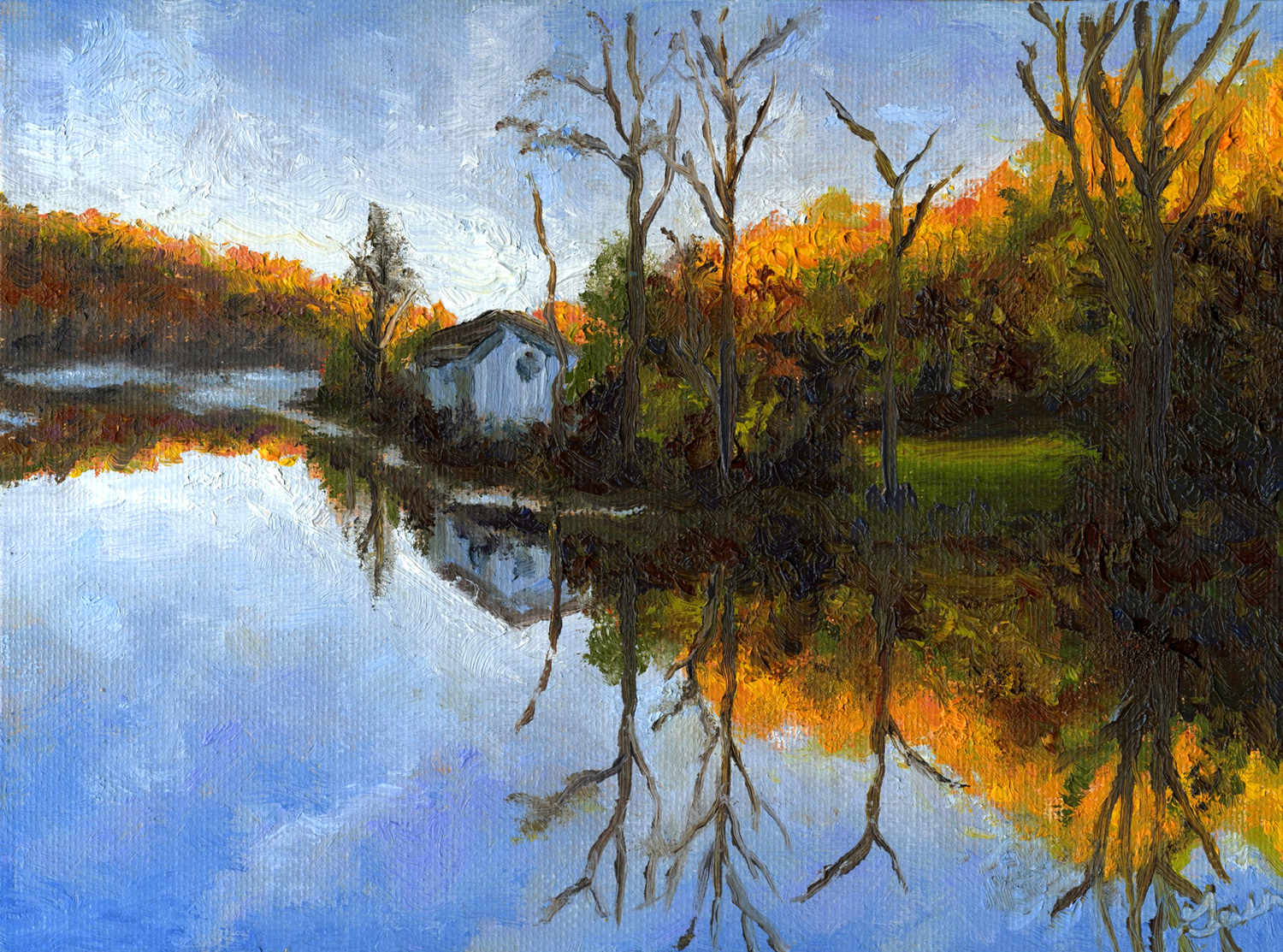Discovering All About Oil Paintings: A Guide to Understanding Their Beauty and Worth
Oil paints have astounded target markets for centuries, providing a look right into the creative mastery of numerous eras. Their abundant history is intertwined with ingenious techniques and extensive emotional expression. Recognizing the products and techniques behind these artworks can enhance appreciation. Additionally, the marketplace for oil paintings presents opportunities for investors and collectors alike. As one explores this interesting world, the inquiry develops: what makes an oil painting absolutely useful?
The Background of Oil Paint: A Trip Via Time
Oil paint has roots that date back to old times, it really prospered throughout the Renaissance, when artists uncovered its flexibility and abundant color possibility. Early examples can be mapped to the 7th century, with techniques developing especially across societies. The tool became noticeable in Northern Europe in the 15th century, particularly with the jobs of artists like Jan van Eyck, who originated its use for comprehensive realistic look and vivid shades. This duration noted a separation from tempera paints, permitting for greater deepness and texture. As oil painting spread, it affected plenty of musicians, causing masterpieces by prominent figures such as Leonardo da Vinci and Rembrandt. The medium's legacy proceeds, forming the art world well into contemporary times.
Recognizing Oil Repaints: Materials and Techniques
As artists check out the globe of oil paints, they encounter a varied selection of materials and strategies that specify this tool. The primary components of oil paint include pigments, which supply color, and drying oils, such as linseed, that bind the pigments and assist in application. Different ingredients can change the paint's appearance and drying out time, enhancing adaptability. Strategies like glazing, where transparent layers are accumulated, and impasto, which entails applying thick paint, permit various aesthetic impacts. Additionally, making use of brushes, combination blades, and even fingers can create unique textures and finishes. Understanding these materials and strategies makes it possible for musicians to totally share their creative thinking and attain the preferred effect in their art work.
The Function of Color in Oil Paintings
Color plays a critical role in oil paints, influencing both aesthetic charm and emotional vibration. Comprehending color concept basics, consisting of the relationships in between shades, can enhance a musician's ability to share mood and ambience. Furthermore, mastering shade blending methods permits higher deepness and richness in a paint's combination.

Color Theory Fundamentals
Recognizing shade theory is necessary for musicians working with oil paints, as it forms the foundation for developing visually interesting and unified structures. Color concept incorporates the research study of exactly how colors communicate, the shade wheel, and the connections in between key, additional, and tertiary shades. Artists make use of corresponding shades to improve contrasts and create prime focus, while comparable shades promote unity and cohesiveness within a piece. Additionally, the ideas of warm and cool shades influence the assumption of depth and room in a painting. Realizing these principles permits artists to adjust shade successfully, leading the audience's eye and connecting their designated message. Proficiency of shade theory eventually improves an artist's capacity to communicate feelings and ideas with their job.
Psychological Effect of Color
The emotional impact of shade in oil paintings plays an important role in how visitors connect and view with art work. Colors evoke particular feelings and state of minds, influencing the audience's mood. Cozy shades like oranges and reds can produce a feeling of heat and power, while awesome tones such as blues and eco-friendlies usually evoke calmness or self-contemplation. Artists strategically select shade combinations to improve narrative components, leading the target market's emotional journey. The saturation and comparison of colors additionally magnify these effects, drawing attention and creating focus. Inevitably, the interaction of shades in oil paintings not only enhances their aesthetic allure however likewise works as an effective tool for psychological expression, improving the viewer's experience and interpretation.
Color Mixing Techniques
While many aspects of oil painting add to the general make-up, understanding color mixing strategies is important for achieving wanted impacts and depth. Shade blending can be approached through different methods, including the subtractive and additive processes. Additive mixing entails combining colors of light, while subtractive blending counts on pigments, where shades mix to create brand-new tones. Musicians commonly use a limited scheme to produce harmonious jobs, recognizing the partnerships in between main, additional, and tertiary shades. Strategies such as glazing and scumbling even more enhance deepness and brightness. By skillfully blending colors, an artist can stimulate emotions, create focal factors, and attain a sense of realism, ultimately boosting the paint's aesthetic and psychological influence.
Famous Oil Painters and Their Iconic Works

Famed for their mastery of shade and technique, oil painters have developed some of the most popular artworks in history. Renowned musicians like Vincent van Gogh mesmerized audiences with his stirring brushwork in "Starry Night," while Claude Monet's "Impression, Sunrise" prepared for Impressionism. Leonardo da Vinci's "Mona Lisa" continues to be a long-lasting icon of imaginative wizard, showcasing his ability in capturing human expression. At the same time, Rembrandt's "The Evening Watch" highlights his cutting-edge use light and darkness. Other significant figures include Pablo Picasso, who revolutionized modern art with his bold trial and error in works like "Les Demoiselles d'Avignon," and Georgia O'Keeffe, whose vibrant representations of blossoms and landscapes assisted define American modernism. Each musician's one-of-a-kind design contributed considerably to the oil painting landscape.
How to Evaluate the Top Quality of an Oil Paint
Evaluating the quality of an oil painting involves a careful assessment of craftsmanship techniques, as well as an analysis of shade and composition. Observing brushwork, layering, and the application of paint can reveal the artist's ability degree. Furthermore, the interplay of colors and the total plan of elements add significantly to the paint's visual value.
Analyzing Workmanship Techniques
A meticulous analysis of workmanship methods is important for figuring out the high quality of an oil painting. Evaluators should first examine the application of paint; thick, textured brushstrokes might recommend a knowledgeable hand, while overly uniform applications might suggest an absence of depth. oil paintings for sale. The layering technique is additionally essential; the presence of lusters and differed density can boost luminosity and intricacy. In addition, the high quality of the materials utilized, such as the canvas and pigments, plays a significant function in longevity and overall aesthetic. Interest to information in elements like sides and shifts between shades reflects the artist's dedication to their craft. Ultimately, these methods add to the paint's emotional effect and market worth, offering as indicators of the artist's ability and intent
Examining Color and Structure
While assessing the high quality of an oil paint, one have to concentrate on the interplay of color and structure, as these components are essential to the artwork's overall effect. Shade options can establish and stimulate emotions mood; for that reason, the artist's combination must be examined for harmony and contrast. A well-balanced composition routes the audience's eye and creates a sense of unity. Musicians often use techniques like the policy of thirds or leading lines to boost visual interest. In addition, using light and darkness can include deepness, improving the three-dimensionality of the painting. Ultimately, a successful oil painting weds shade and structure, engaging the visitor and welcoming a much deeper recognition of the musician's vision and method.
Caring for and Preserving Oil Paintings
Proper treatment and conservation of oil paintings is vital for maintaining their integrity and long life. To secure these artworks, it is essential to present them away from straight sunlight, which can cause fading and discoloration. Maintaining a steady atmosphere with controlled temperature and moisture more aids in avoiding damages. Cleansing ought to be done gently making use of a soft, dry cloth, staying clear of any type of severe chemicals that can more info hurt the paint or varnish. Routine assessments for signs of damage, such as fracturing or flaking, are advisable. When transferring or saving oil paints, correct cushioning and framing are essential to prevent physical injury. Eventually, attentive care adds to the visual charm and worth of oil paintings with time.
The Market for Oil Paints: Investing and accumulating
Understanding the marketplace characteristics for oil paintings is important for collectors and capitalists alike. The worth of these art work is affected by numerous aspects, consisting of the musician's reputation, historical relevance, and present trends. Collectors commonly look for pieces that resonate directly while taking into consideration potential gratitude in worth. Auctions and galleries work as main venues for trading, with prices changing based upon need and rarity. Buying oil paintings needs research into the market, along with an understanding of credibility and provenance. In addition, emerging artists may provide chances for considerable returns, while developed names can regulate high costs. On the whole, a strategic strategy to collecting can produce both aesthetic pleasure and financial benefits.

Often Asked Questions
What Are the Ecological Effects of Oil Paint Materials?
The environmental effects of oil painting products include the release of volatile organic compounds (VOCs), unsafe waste generation, and resource extraction for pigments. These elements contribute to contamination and eco-friendly destruction, elevating concerns amongst ecologically mindful artists and consumers.
Exactly How Do Different Canvases Impact Oil Painting Outcomes?
Different canvases influence oil painting results considerably. Surface area, absorbency, and texture quality can alter paint application, drying times, and shade vibrancy. Musicians typically choose specific canvases to attain wanted results and improve their creative expression.
Can Oil Paintings Be Restored if Damaged?
Oil paints can without a doubt be recovered if damaged. Professional conservators make use of different methods to repair rips, tidy surfaces, and address discoloration, guaranteeing that the artwork preserves its initial appeal and value for future generations.
What Are the Signs of an Original Oil Paint?
The indicators of an original oil paint include visible brush strokes, appearance variants, and an uneven canvas weave (oil paintings for sale). Additionally, credibility may be confirmed with provenance, signatures, and the presence of a varnish layer special to oil mediums
How Has Modern Technology Influenced Modern Oil Paint Techniques?
Technology has actually significantly affected modern oil painting strategies by presenting electronic devices for preparation, improved materials for structure and long life, and on-line systems for sharing and marketing art, consequently broadening musicians' innovative possibilities and audience get to. Oil paint has roots that date back to old times, it genuinely grew during the Renaissance, when artists discovered its versatility and abundant shade capacity. The emotional influence of shade in oil paintings plays a vital function in how viewers regard and attach with art work. While lots of elements of oil paint add to the general structure, understanding color mixing methods is necessary for attaining wanted results and depth. Reviewing the top quality of an oil painting includes a mindful analysis of craftsmanship techniques, as well as an analysis of color and composition. While assessing the high quality of an oil paint, one must focus on the interplay of color and composition, as these aspects are essential to the artwork's total influence.